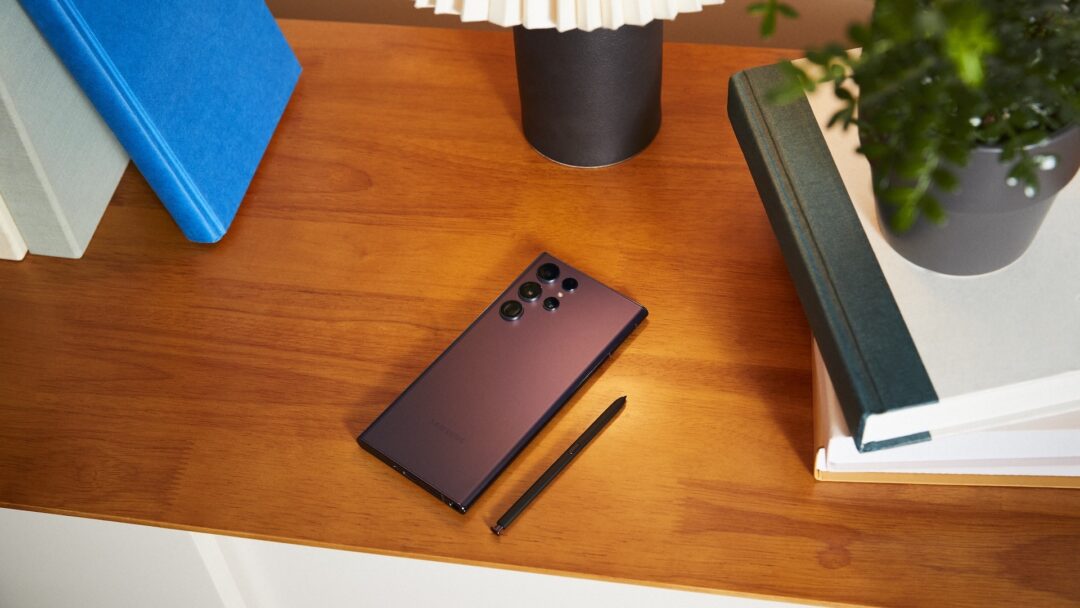Again this year, Galaxy Unpacked was (hopefully for the last time) a virtual event due to the Corvid-19 pandemic, but Samsung was still able to unveil a lot of exciting products at the first big launch of the year.
The absolute highlight of the launch was, not surprisingly, a new version of the Korean flagship Galaxy S Ultra, this time named the Samsung Galaxy S22 Ultra.
More remarkably, the new top-of-the-range handset might as well have been named Galaxy Note 22 Ultra, because in reality it’s a sort of fusion of Samsung’s Galaxy S and Galaxy Note series, with the emphasis on the S series’ camera features and the Note series’ focus on productivity.
Samsung had more or less officially put the Galaxy Note series to rest in favour of the company’s new venture into foldable smartphones such as the Galaxy Z Fold 3 and Galaxy Z Flip 3.
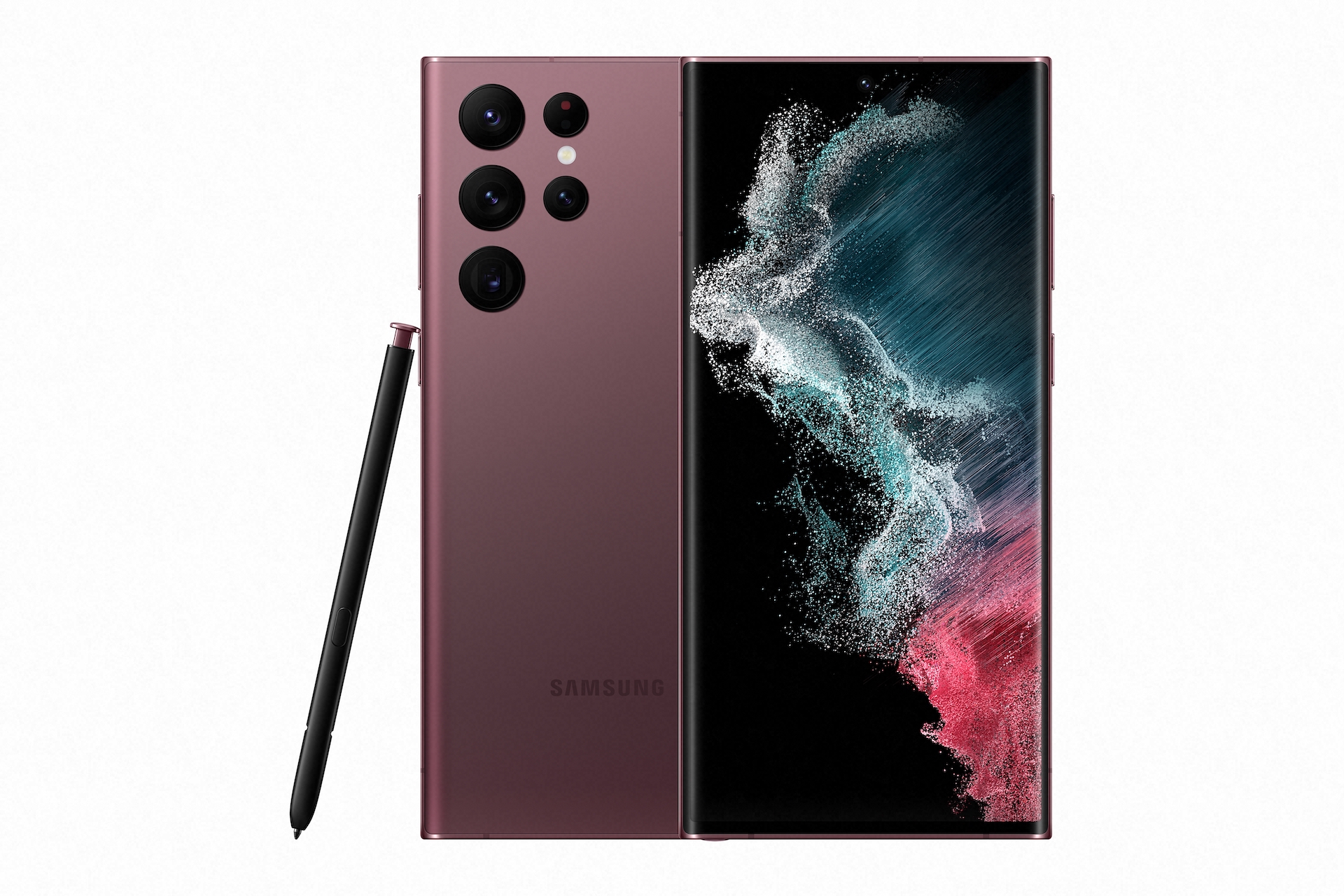
But both the Galaxy Z Fold 3 and last year’s Galaxy S21 Ultra support the S-Pen as well as some of the key features from the Note series, and Korean business media ET News, among others, already wrote last year that the upcoming Galaxy S22 Ultra would be marketed as a Note successor. Not only would it come with even more Note-specific features and an integrated S-Pen. It would also have a more Note-like design.
On these points, the Samsung Galaxy S22 Ultra is the successor to the Galaxy Note
And that claim stood to reason, because that’s exactly what Samsung just launched. With its flat and angular design, the new Samsung Galaxy S22 Ultra has more in common with previous Note models like the Galaxy Note 10+ and Galaxy Note 20 Ultra than it does with the first two Galaxy S Ultra models.
It also comes in four colours – namely Phantom Black, Phantom White, Green and Burgundy – the latter in particular having been a distinctive “Note colour” a few times in the past.
And unlike its predecessor, last year’s S21 Ultra, the Galaxy S22 Ultra does indeed come with the S-Pen fully integrated.
So the S-Pen is included when you buy the phone, just as there’s room for the digital stylus inside the phone itself, where it’s inserted via a small hole in the bottom.
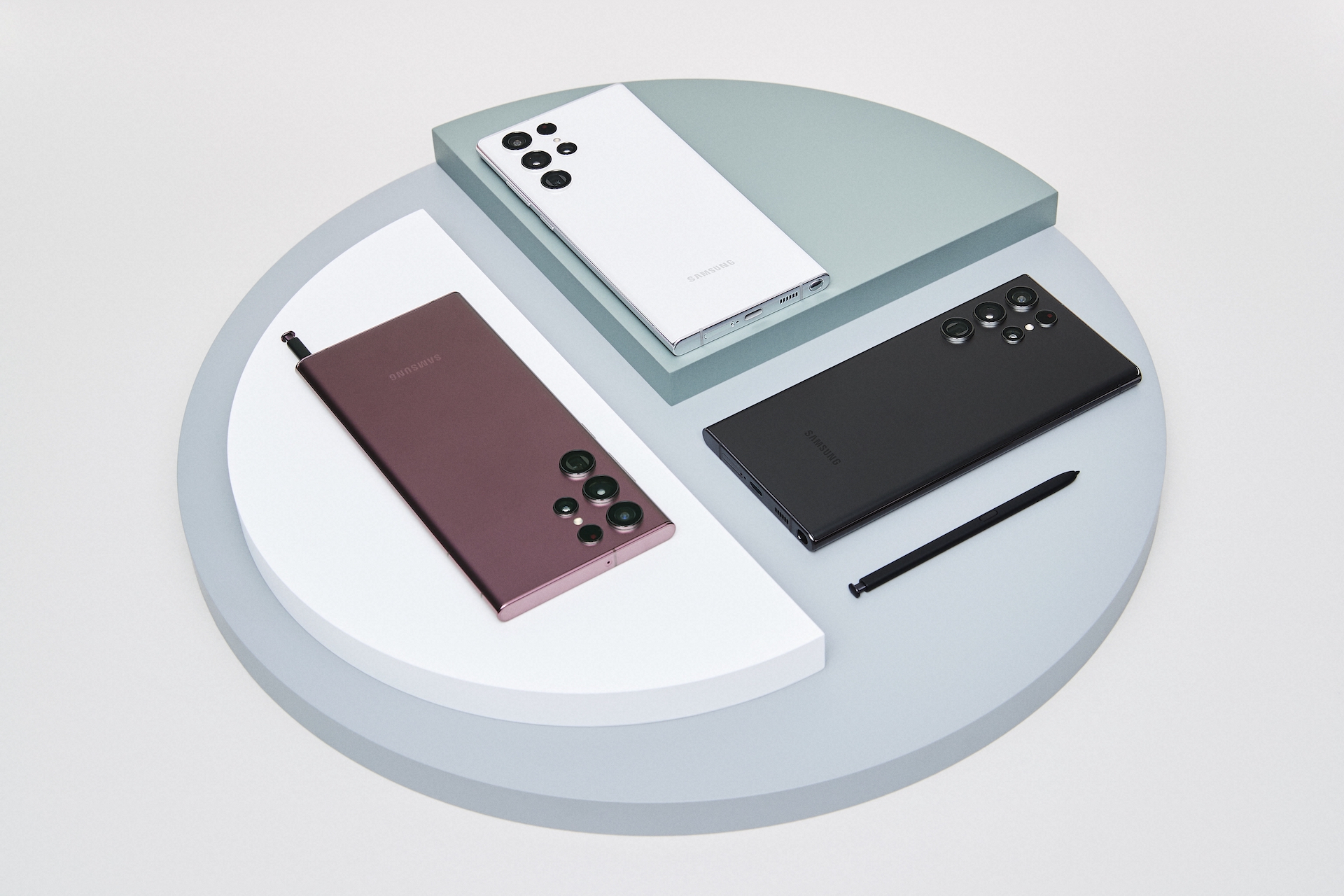
All the familiar S-Pen functions are supported – it can be used as a remote release for the camera, for example, or as a remote control for presentations – and the most important function in particular, the ability to write and take notes with the pen directly on the screen, has been significantly upgraded.
The S-Pen for the Galaxy Note 20 had a latency of 9 ms, which Samsung has now reduced to 2.8 ms. The Koreans proudly claim that the ultra-short delay and improved artificial intelligence (which should be able to predict where you place the pen on the screen before you even know it) should make the writing experience one hundred percent natural. And of course we’re looking forward to putting that to the test.
Samsung’s own notes app, Samsung Notes, has also been enhanced to recognise handwriting in 88 languages and convert the written word into digital text.
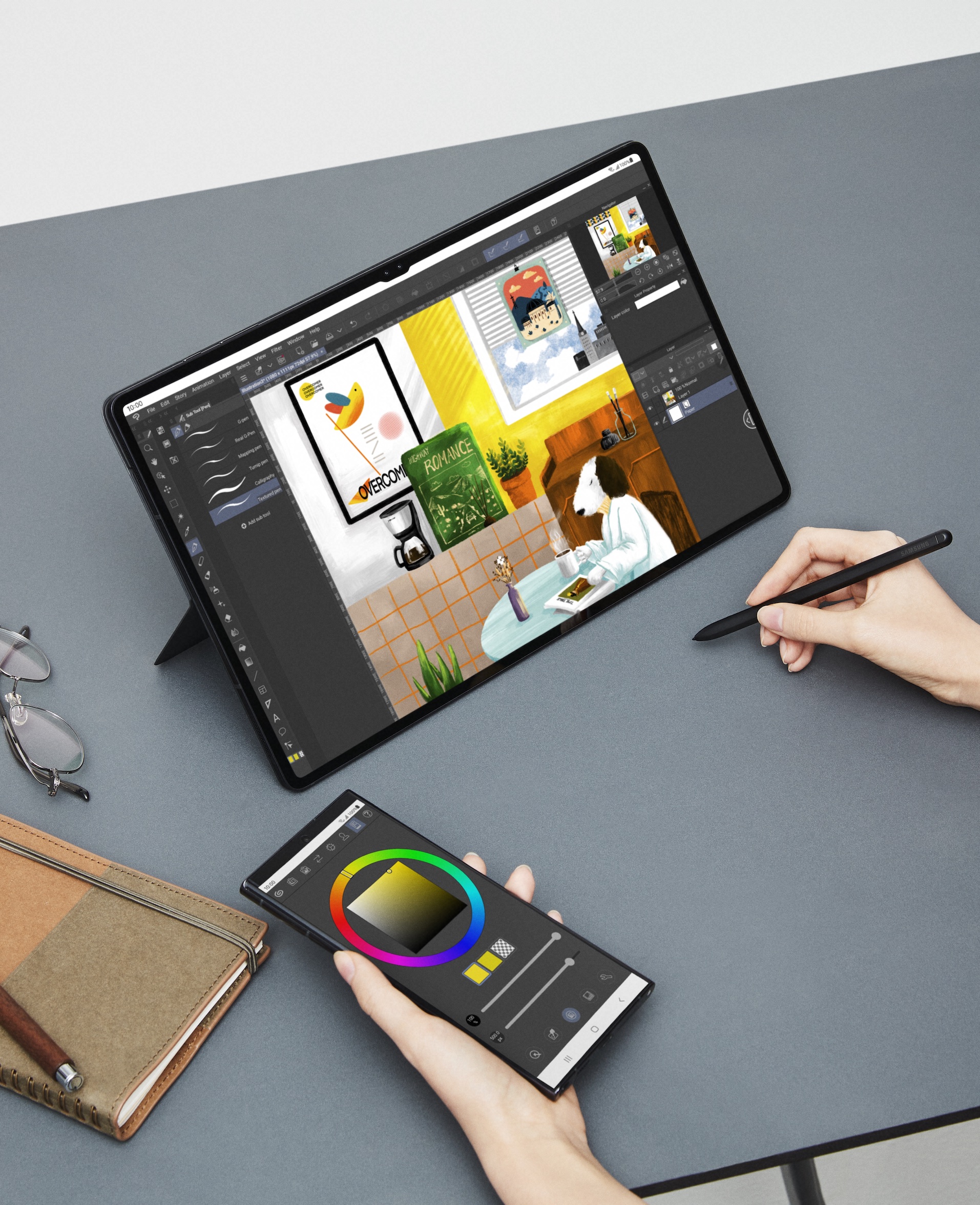
The Samsung Galaxy S22 Ultra also supports the brand new Collaboration View, which creates a connection between the user’s Galaxy S22 mobile (the function is supported by the entire new S22 series) and a tablet from the new Galaxy Tab S8 series. Once the connection is established, the mobile phone can be used as a kind of trackpad to navigate menus and select or adjust various functions while, for example, drawing on the tablet screen with the S-Pen.
Camera with artificial intelligence
By the way, Samsung does not only use artificial intelligence (AI) to predict how the user writes with his S-Pen on the screen. The new and updated camera in the Galaxy S22 Ultra offers a host of new features, all of which have in common that they make extensive use of artificial intelligence to take the best possible pictures and videos.
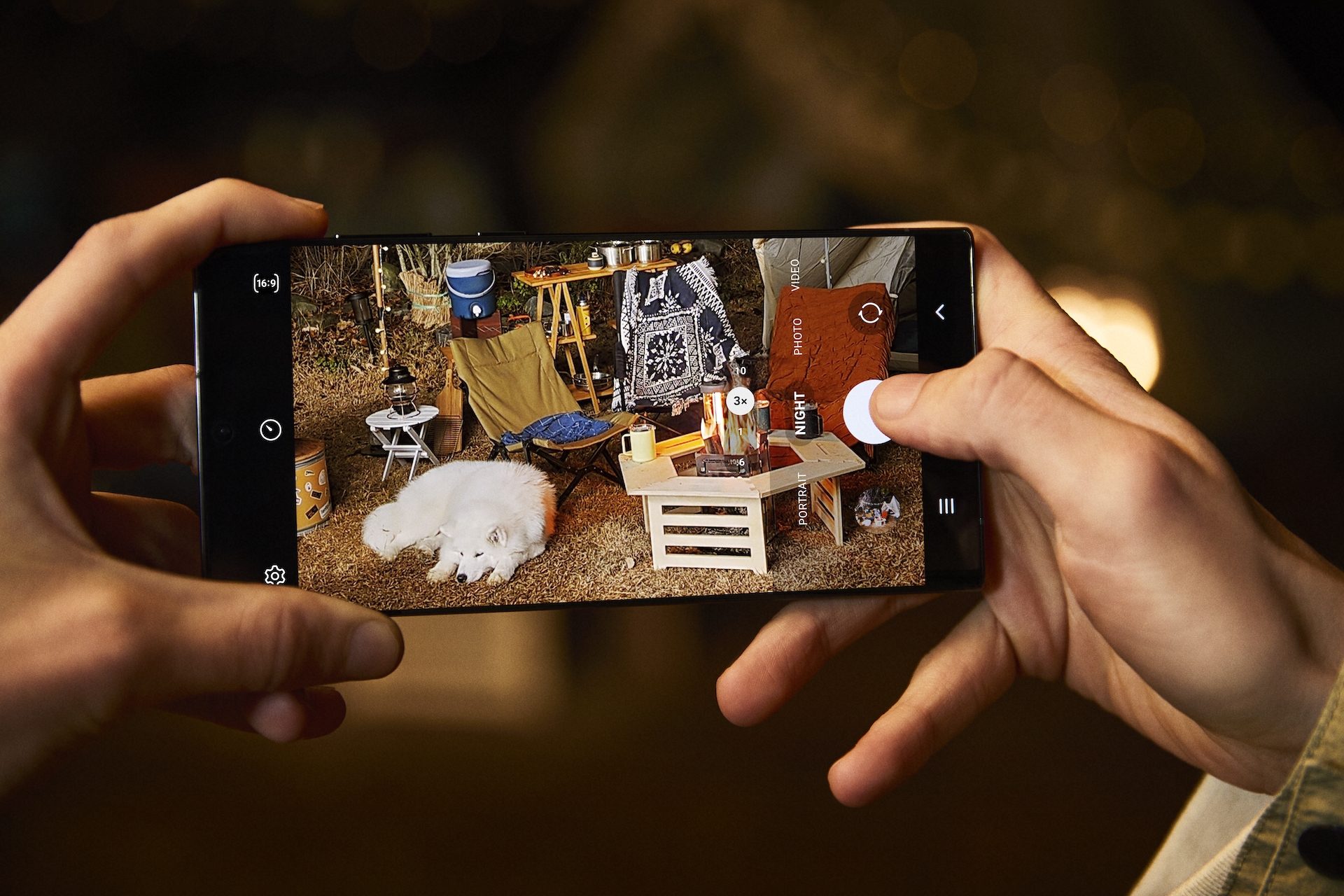
This includes the new AI-based autofocus, which promises to make users’ images razor-sharp when taking photos, just as the “Night Solution” also uses artificial intelligence – in this context to optimise images taken at night or in poor lighting, giving them a higher resolution with more sharpness and detail.
This also applies to pictures taken in portrait mode, which is even supported by the front camera. In other words, you can now take razor-sharp selfies with bokeh effect in the evening and at night with your Galaxy S22 Ultra, according to Samsung, which also assures that the artificial intelligence ensures that the bokeh effect is more precise and correct – even with “difficult” subjects such as if you photograph a person with long hair in front of a tree with lots of leaves and small branches.
When it comes to video, AI comes into its own with the so-called AFR (Auto Frame Rate) function, which adjusts the frame rate of video footage to suit the environment, lighting, etc.
Also AI-based, Auto Framing adjusts the image to include everyone if you’re filming a group of people, while Tracking Shot lets you pick out a specific person in the scene, which the camera then focuses on and automatically follows as they move.
Same camera specs
Let it also be said that pretty much all the camera news in the Galaxy S22 Ultra has to do with software and artificial intelligence.
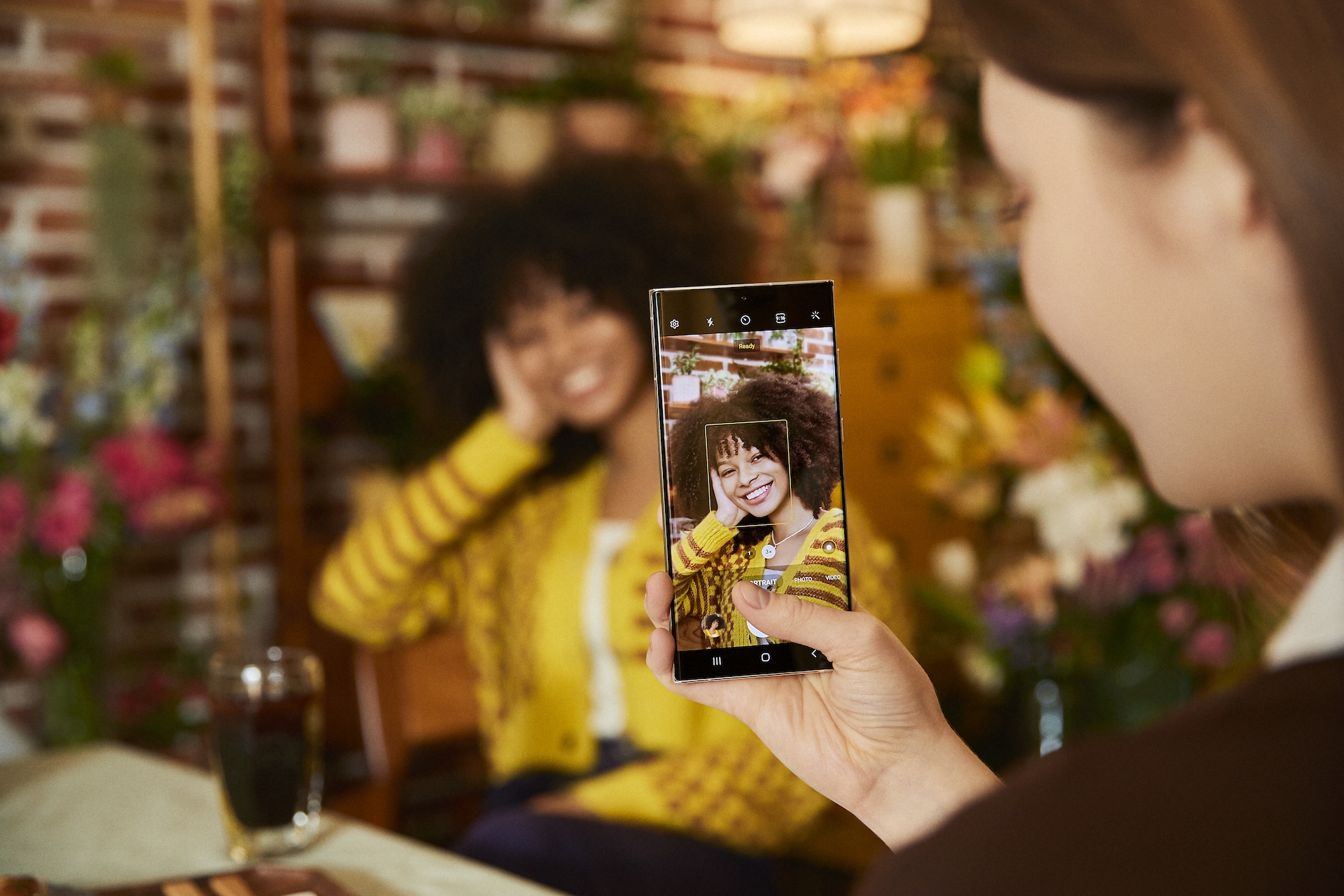
Indeed, on paper, the new top-of-the-range handset has exactly the same camera configuration as its predecessor. That means two separate telephoto lenses of 10 megapixels each, one with 3x optical zoom and the other with 10x optical zoom. In addition, there’s a regular wide-angle lens of an insane 108 megapixels (f/1.8 with optical image stabilisation) with 12-bit HDR and an ultra-wide-angle lens of 12 megapixels (f/2.2). And the front camera is 40 megapixels, which was also the case for the Galaxy S21 Ultra.
However, it should be mentioned that the primary camera sensor itself has been improved, with each pixel now being 1.23 times larger than last year, according to Samsung. In addition, the camera can take pictures in RAW format and even comes with a separate so-called ExpertRaw app that can export up to 16-bit RAW files.
In addition, many of the AI-based features mentioned above are also directly available via other apps. For example, you will be able to use the “Night Solution” when taking pictures in Snapchat and similar chat apps.
Of course, the Samsung Galaxy S22 Ultra comes with 100x digital Space Zoom, so you can take blurry photos of the Moon. As well as with all the other camera features that Samsung has launched along with the previous Ultra models in the Galaxy S series.
Other configurations
Looking at the other specifications, the Samsung Galaxy S22 Ultra might at first glance look more like its predecessor than it is, but in fact Samsung has upped the ante across the board.
As on the Galaxy S21 Ultra, the screen is of the Dynamic AMOLED 2X type, measures 6.8″ and comes with QHD+ resolution. But where its predecessor had a dynamic refresh rate between 10 Hz and 120 Hz, the Galaxy S22 Ultra manages to lower the rate all the way down to 1 Hz, for example if you’re taking a long look at a photo that doesn’t require the screen to be refreshed at all.
The screen’s peak brightness is an impressive 1750 nits.
Both the screen and the back of the phone are protected by Gorilla Glass Victus+, while the rest of the phone’s body is made of so-called armor aluminum, just like the Samsung Galaxy Z Flip 3 and Fold 3.
The whole thing is powered by Samsung’s own new 4nm Exynos 2200 processor. The Samsung Galaxy S22 Ultra is available in various configurations with either 8 or 12 GB of RAM, while on-board storage goes from 128 GB all the way up to 1 TB. In addition, the phone comes with 5G, Wi-Fi 6E and Bluetooth 5.2, as well as Android 12 and Samsung’s own One UI version 4.1.
The battery is 5000 mAh and the phone supports up to 45 W fast charging and 15 W wireless charging. Note, however, that the charger must be purchased separately.
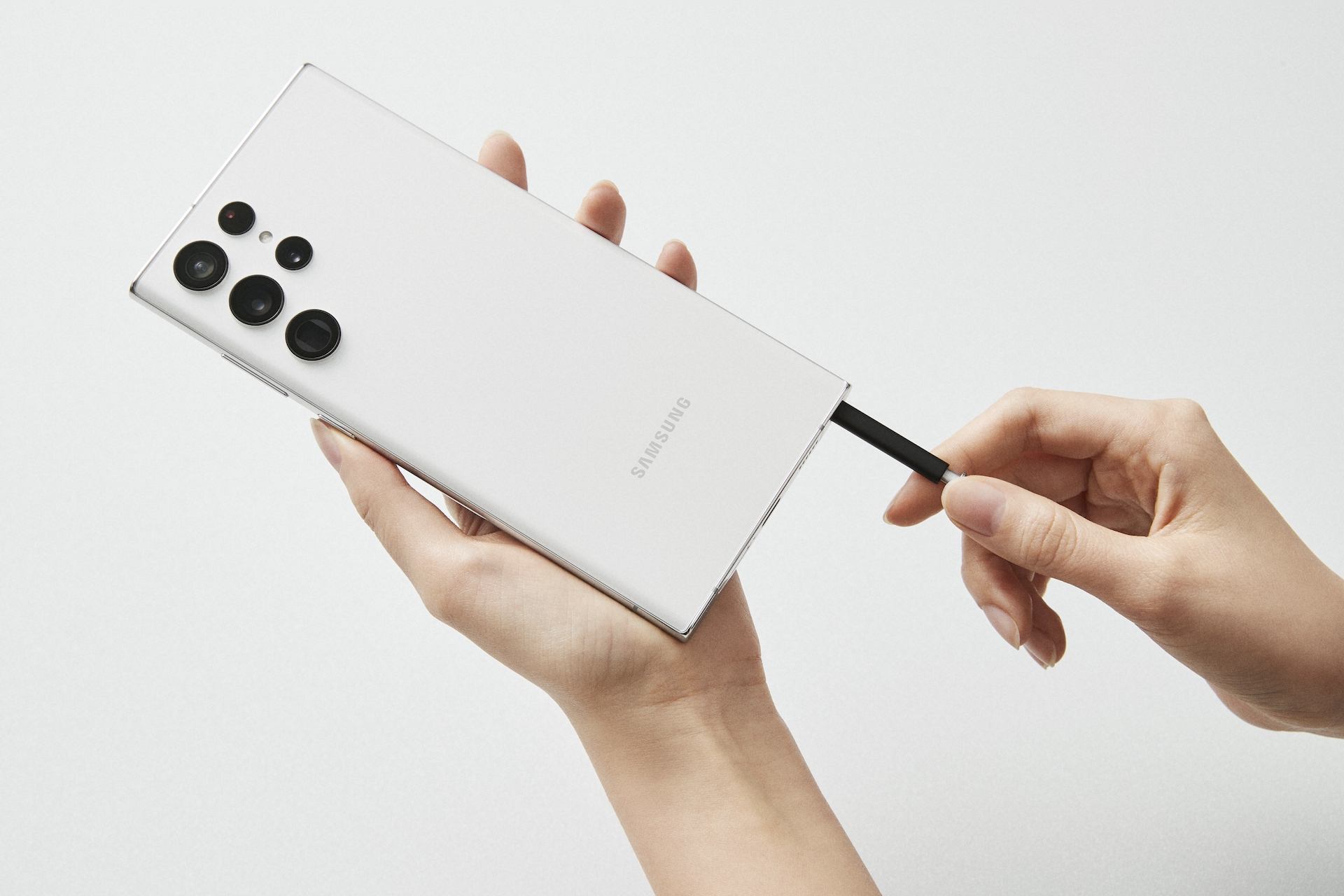
Price and availability
The Samsung Galaxy S22 Ultra will be available in stores from 25th February at a price of EUR 1,249 for the cheapest model with 8 GB of RAM and 128 GB of built-in storage.
